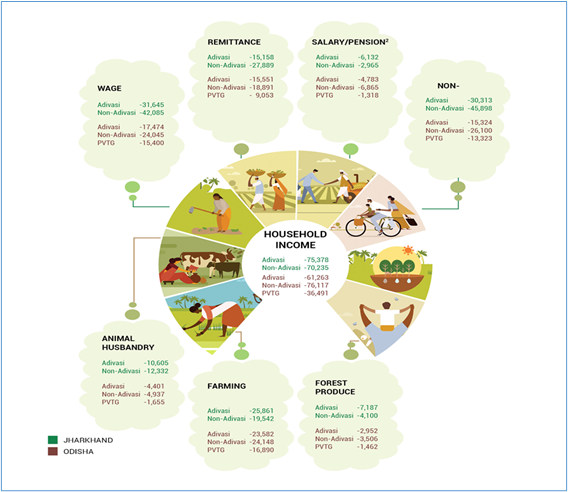PREVIOUS
Status Of Adivasi Livelihoods (SAL) Report, 2022
January 24 , 2024
310 days
474
0
- The report titled Status of Adivasi Livelihoods Report 2022 was released by the non-profit PRADAN.
- The aim of the SAL reports is to understand the status of livelihoods of Scheduled Tribes from India’s central belt.
- In Madhya Pradesh, 51 per cent of Adivasi, 63 per cent non-Adivasi, and 50 per cent of Particularly Vulnerable Tribal Groups (PVTG) villages have PDS outlets.
- In Chhattisgarh, the figures are 63 per cent, 88 per cent, and 36 per cent.
- In terms of road connectivity, 78 per cent Adivasi, 79 per cent non-Adivasi, and 80 per cent PVTG villages are linked to block headquarters by all-weather roads in Madhya Pradesh.
- In Chhattisgarh, the corresponding figures are 80 per cent, 100 per cent, and 82 per cent.
- About 42 per cent of Adivasi, 63 per cent non-Adivasi, and 80 per cent of PVTG villages in Madhya Pradesh are linked to block headquarters by public transport.
- For Chhattisgarh, the figures are 30 per cent, 40 per cent, and 9 per cent respectively.
- In Madhya Pradesh, 32 per cent of Adivasi households, 27 per cent of non-Adivasi households, and 61 per cent of PVTG households reported being severely food insecure.
- In Chhattisgarh, 27 per cent of Adivasi households, 42 per cent of non-Adivasi households, and 29 per cent of PVTG households reported being severely food insecure.

Leave a Reply
Your Comment is awaiting moderation.


